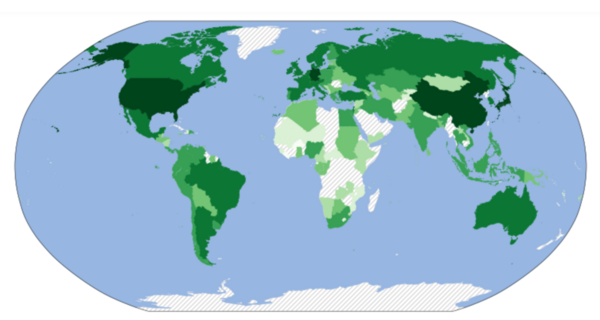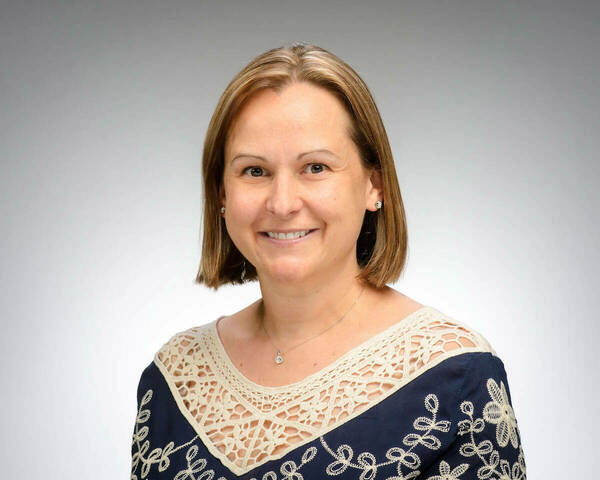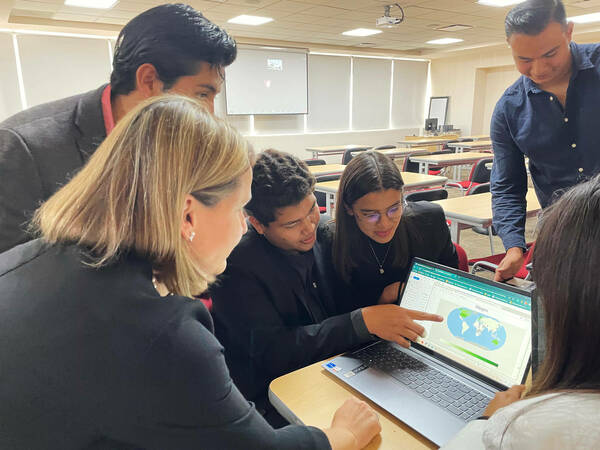Global migration is accelerating and bringing with it new challenges. One Notre Dame economist is designing digital tools to help students, scholars, leaders, and nations visualize migration and prepare for it more effectively.

Researchers often study the flow of things like rivers, electricity, or blood. Eva Dziadula studies the flow of something very different: people. A teaching professor in the University of Notre Dame's Department of Economics, Dziadula works to identify and understand patterns in migration.
Global migration is accelerating and bringing with it new challenges. In 2020, 281 million people migrated away from their home country—a 62% increase from 20 years ago. As a result of this acceleration, more people than at any point in history are living in a country in which they were not born.
In 2015, a sudden influx of refugees from Syria led to a humanitarian crisis at the borders of several European countries. The same year, many migrants from Africa and the Middle East arrived in Italy and Greece to find critical shortages of shelter, food, education, and work.
The key to solving these problems, Dziadula says, is better prediction. But modeling migration patterns in a world of 8 billion people across nearly 200 separate nations is a daunting task that requires several different types of expertise.

With support from the National Science Foundation, Dziadula partnered with Paul Brenner, a professor of the practice and the senior associate director of Notre Dame’s Center for Research Computing (CRC). Dziadula and Brenner were joined by three student researchers: John O’Hare and Marie Clay in the CRC as well as Carl Colglazier, a Ph.D. student in Technology and Social Behavior at Northwestern University.
Together, the team created the first-ever open source tool for visualizing and predicting global migration. The tool allows users to simulate shocks, obtain estimates, and visualize the impact. By simulating global flows of migrants, it could help researchers and policymakers prepare more proactively for migration.
The basic economic premise that guides the tool is simple: People will migrate when and where the benefits of migrating outweigh the costs. But translating this simple economic logic into a model requires complex calculation. Some costs and benefits are obvious. Travel expenses are an obvious cost. The potential for higher wages is an obvious benefit. But often, the costs and benefits are more subtle. Dziadula and her team built a model that includes a wide array of factors to model both costs and benefits. It includes not just monetary losses and gains but also factors like the loss of family and community connections, the difficulty of learning a new language, the destination country’s openness to immigration, and political freedoms migrants can expect to find when they arrive.
Dziadula uses this model regularly in her Economics of Immigration class. Her students are exposed to the Python programming language and are tasked with altering the parameters of the economics model based on hypothetical shocks to foreign economies, then interpreting the model’s prediction of future flows of migrants.

Dziadula recently taught a workshop on Women in Migration at the Universidad Popular Autónoma del Estado de Puebla (UPAEP), a Catholic university in Puebla, Mexico, where she unveiled the team’s interactive visualization tool to actively engage students with the theoretical models she discussed.
The tool will eventually be available online and will be free to access for anyone with an internet connection and a standard internet browser. This level of accessibility, the researchers say, will help the tool have a positive impact while also enabling other researchers to build on their work.
“Global migration is one of the defining issues of our time," said Dziadula. "We are pleased that through this collaboration, we have been able to develop a tool that gives us a better visualization of what global migration looks like. It allows users to interactively see the impact of different events on global migration flows so they can see what happens when they change the importance of certain factors. It is a practical teaching tool that brings theoretical math models to life and deepens students' understanding.”
Contact:
Brett Beasley / Writer and Editorial Program Manager
Notre Dame Research / University of Notre Dame
bbeasle1@nd.edu / 574.631.8183
research.nd.edu / @UNDResearch
About Notre Dame Research:
The University of Notre Dame is a private research and teaching university inspired by its Catholic mission. Located in South Bend, Indiana, its researchers are advancing human understanding through research, scholarship, education, and creative endeavor in order to be a repository for knowledge and a powerful means for doing good in the world. For more information, please see research.nd.edu or @UNDResearch.
Originally published by at research.nd.edu on May 09, 2023.


